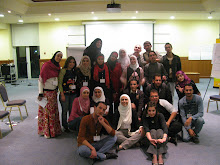



This series of photos shows the reaction towards an infected person -- especially an HIV positive person .
As we see, it starts with a shock whenever you mention that somebody got infected; it suggests that they must have had unsafe sex, which is a really big problem in our culture because having sex before marriage is not acceptable in our religion nor our culture.
Then, all the gossip in the world starts about this person about how bad he or she is and that it only happened because of sex, not any other reason.
The avoidance then starts after and the contempt comes from almost every one -- family, friends, a large portion of medical personnel -- and they tend to leave this person alone without the kind of care she/he needs.
Ultimately, they turn their backs on her/him whithout thinking of what they can do to help.
I might have taken the very dark picture of community respond to this case, but the reason is that STIGMA is the biggest cause that interferes with spreading information about HIV and makes it really hard for HIV people to live in a safe area. Additionally, it doesn't seem that there is much of an interest to make a general plan for the prevention of HIV infections among young people. The community here does not admit that it is a danger here, and sexual activities are at higher prevalence now. Awareness must be spread. We don't have to have a high incidence report to start protecting ourselves in the right way!!!
Will you think with me about how STIGMA can be a destructive thing for making an awareness plan promoting attention to PLHIV??!















